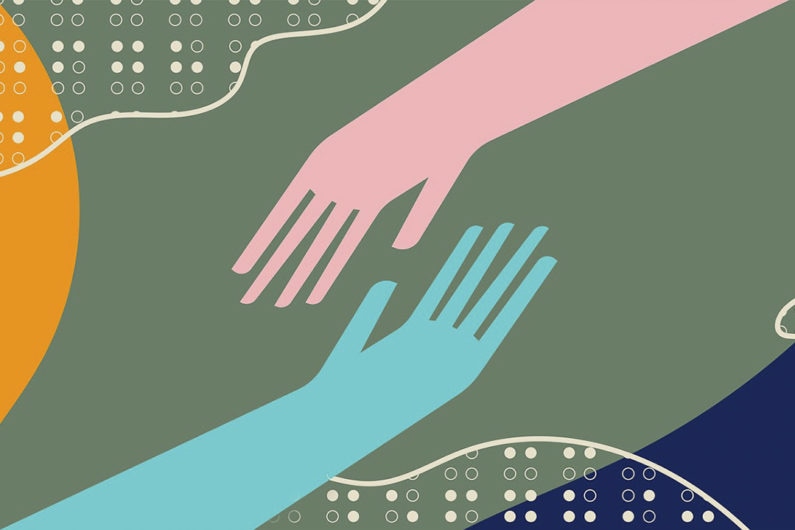Jun 1 2018
A team of scientists from Stanford and Seoul National University have built an artificial sensory nerve system that can identify letters in the Braille alphabet and trigger the twitch reflex in a cockroach.
 Stanford Professor Zhenan Bao is leading American and Korean researchers in the quest for an artificial nerve system. (Image credit: Kevin Craft)
Stanford Professor Zhenan Bao is leading American and Korean researchers in the quest for an artificial nerve system. (Image credit: Kevin Craft)
The study, published May 31st in Science, is a step toward developing artificial skin for prosthetic limbs, to restore sensation to amputees and, maybe, in the future give robots some type of reflex capability.
We take skin for granted but it’s a complex sensing, signaling and decision-making system. This artificial sensory nerve system is a step toward making skin-like sensory neural networks for all sorts of applications.
Zhenan Bao, Professor of Chemical Engineering and one of the senior authors
Building blocks
This breakthrough is part of Bao’s mission to mimic how skin can stretch, repair itself and, most extraordinarily, act like a smart sensory network that knows not only how to convey pleasant sensations to the brain, but also when to direct the muscles to react reflexively to make quick decisions.
The new Science paper describes how the scientists built an artificial sensory nerve circuit that could be embedded in a future skin-like covering for soft robotics and neuro-prosthetic devices. This basic artificial nerve circuit incorporates three formerly described parts.
The first is a touch sensor that can detect even minute forces. This sensor transmits signals through the second component — a flexible electronic neuron. The electronic neuron and touch sensor are enhanced versions of inventions earlier reported by the Bao lab.
Sensory signals from these components trigger the third component, an artificial synaptic transistor fashioned after human synapses. The synaptic transistor is the creation of Tae-Woo Lee of Seoul National University, who spent his sabbatical year in Bao’s Stanford lab to initiate the collaborative study.
“Biological synapses can relay signals, and also store information to make simple decisions,” said Lee, who was the paper’s second senior author. “The synaptic transistor performs these functions in the artificial nerve circuit.”
Lee used a knee reflex as an instance of how more-advanced artificial nerve circuits might soon be part of an artificial skin that would provide prosthetic devices or robots senses as well as reflexes.
In humans, when an unexpected tap makes the knee muscles to stretch, certain sensors in those muscles transmit an impulse via a neuron. The neuron consecutively transmits a series of signals to the applicable synapses. The synaptic network identifies the pattern of the unexpected stretch and releases two signals concurrently, one making the knee muscles to contract reflexively and a second, less critical signal to register the sensation in the brain.
Making it work
The new research has much more to achieve before it reaches that level of complexity. But in the Science paper, the team describes how the electronic neuron transmitted signals to the synaptic transistor, which was designed in such a way that it learned to recognize and react to sensory inputs based on the frequency and intensity of low-power signals, similar to a biological synapse.
The team members tested the system’s ability to both produce reflexes and sense touch.
In one experiment, they connected their artificial nerve to a cockroach leg and applied minute increments of pressure to their touch sensor. The electronic neuron changed the sensor signal into digital signals and relayed them via the synaptic transistor, making the leg to twitch more or less strongly as the pressure on the touch sensor increased or decreased.
They also demonstrated that the artificial nerve could detect a range of touch sensations. In one experiment, the artificial nerve was capable of differentiating Braille letters. In another, they rolled a cylinder over the sensor in various directions and accurately sensed the direction of the motion.
Bao’s graduate students Yeongin Kim and Alex Chortos, plus Wentao Xu, a scientist from Lee’s own lab, were also key to incorporating the components into the functional artificial sensory nervous system.
The scientists say artificial nerve technology remains in its embryonic stage. For example, developing artificial skin coverings for prosthetic devices will require new devices to perceive heat and other sensations, the ability to embed them into flexible circuits, and then a method to interface all of this to the brain.
The team also hopes to develop low-power, artificial sensor nets to cover robots, the idea being to make them more responsive by providing some of the same feedback that humans get from their skin.
Zhenan Bao is also a senior fellow of the Precourt Institute for Energy, a member of Stanford Bio-X and of the Stanford Neurosciences Institute, a faculty fellow at Stanford ChEM-H, an affiliate of Stanford Woods Institute for the Environment, and a founder and faculty director of the Stanford Wearable Electronics Initiative (eWEAR). Stanford researchers Yuxin Liu, Jin Young Oh, Donghee Son, Jiheong Kang, Amir M. Foudeh, Chenxin Zhu, Simiao Niu, Jia Liu and Raphael Pfattner all participated in the work. Team member Yeongjun Lee is affiliated with Seoul National University. Alex Chortos is currently a postdoctoral scholar at Harvard.
This study was financed by the Ministry of Science and ICT, Korea; by Seoul National University (SNU); by Samsung Electronics; by the National Nanotechnology Coordinated Infrastructure; and by the Stanford Nano Shared Facilities (SNSF). Patents related to this research are planned.